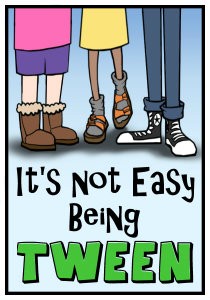How to Make Sure Class Assessments Are Fair
A MiddleWeb Blog

This always impressed me because it was concrete evidence that something he did succeeded and had meaning. However, I can also remember the days when he and his team would do testing on a part they had designed, and it would fail. They would have to make tweaks and test it again until it met the standard of their automotive customer.
For several years, I was an adjunct professor and taught an Assessment and Evaluation course for teachers, and I used this analogy in my class to demonstrate that the best testing practices tell us about the state of our own work as well as the progress of our students.
As a special education teacher consultant, part of my role was to assist the content-area teacher in developing or adapting assessments for the students on my caseload. I became fervent about ensuring that all students were able to demonstrate their learning – and that the inability to do well on an objective test did not determine their final grade in the class.
In recent years, I’ve presented about smart assessment practice at the summer AMLE Leadership Institutes because I am so passionate about this issue. Here’s a summary of what I have learned and shared in nearly 30 years of teaching.
(Also see Cheryl’s recent related post “Try Fun and Games with Formative Assessment”.)
Prior to Summative Assessment:
- Ensure that the assessment has a purpose beyond just a grade in the gradebook. There should be a valid reason for making this a high(er) stakes grade.
- The material on the assessment should match what you taught. I’ve often seen tests where the questions come from an outside source such as the textbook company or they’ve been purchased online at a teacher site and cover material that was not addressed in class. “They should have read it in the chapter” is not an acceptable reason to put a surprise question on a test.
- Provide the standards, topics, and criteria they are expected to know for the assessment. If a project, show exemplars and discuss what makes them so prior to turning them loose. One caveat, I often show exemplars that are not on the same topic as their final project to avoid an exact duplicate.
- Include higher-order thinking tasks. In my long experience, students with learning difficulties often struggle on rote memorization but can demonstrate their knowledge of the topic in more creative or open-ended ways.
- Give lots of ungraded practice, formative assessments, and scaffolding prior to administering the test.
- Conduct a review including some questions in the same format as the test.
- Offer opportunities for peer teaching. For example, prior to an objective test, I make a review using Socrative. Then, instead of each student answering individually, I challenge them to see if they can get 100% on as many answers as possible working as a class. To do this, they must discuss the question as a group and help each other determine the correct answer before anyone clicks a button. If they were incorrect, no one feels singled out and this provides an opportunity for timely reteaching.
- For each unit, provide assessments in a variety of formats so that students have the opportunity to demonstrate their understanding if an objective test is not their strength.
During Summative Assessment:
- Format the test for readability. Use simple, straightforward language, lots of white space, organized lists or charts, and pictorial representations.
- Please use a digital format, rather than handwritten, if at all possible. Having to decode handwriting adds an extra degree of unnecessary difficulty.
- Include a wide variety of question types and don’t include obscure or trick questions.
- Allow kids sufficient time to finish the test to the best of their ability. In many instances, this is a required accommodation for a student with a diagnosis, but I believe it is fair to all students to allow them the time to do their best. To accomplish this within one class period, I generally develop an assessment that I estimate will take about 2/3 of the class time. [My formula: time myself taking the test and multiply by four to get an estimate.] When finished, they are not allowed to get up and turn their test in. They remain at their seats and silently read or draw on the back until the end of the class. Then, I collect all tests at the end of class. This takes the pressure off from seeing others finish before them and lessens anxiety knowing they have the whole class period to finish.
After Summative Assessment:
- Ideally, prior to a test, students have been given other chances to demonstrate their learning as described above. Once they see what they have gotten wrong, allow them to make corrections and resubmit if possible (especially if they’ve done poorly). You don’t have to raise their grade to an A, but at least to a passing score. Rick Wormeli has written extensively on the topic of re-takes and re-dos, and his recommendations make sense to me.
- On a project or paper, prior to assigning a grade, provide feedback on any deficit areas and allow for adjustments or improvements. For papers, I use a single-point rubric with my comments, or I type directly on their Google doc, and they make revisions before I assign a final mark. My goal is that they have put forth their best effort and produce quality work, not ranking or sorting them by letter grade.
- Students should be graded on their individual results and not compared to their peers. And, please, never grade on a curve.
- Make sure your on-demand assessments do not count spelling errors against a student. You are testing the concept attainment, not their spelling prowess.
- Behavior should not have a large effect on the final score. For example, forgetting to put a name on a paper (we’re all human and make mistakes), class participation, and timeliness should not lower their grade substantially. In fact, I believe it is best to separate behavior (“teaching them responsibility”) from academic grades altogether.
- No one assessment should make or break a student’s entire marking period. In middle school, there is no need for such a high-stakes practice.
There is so much more to know about the art of assessment, but the main goal is to provide opportunities for all your students to demonstrate their understanding to the best of their ability. Be fair. Be equitable. It’s so important to the future of each and every kid in your room.

































As usual, Cheryl, I love your ideas! Giving every kid a reasonable chance at success should be the goal of every assessment!
Thank you, Debbie. As always, I appreciate your support.
I really enjoyed your content on summative assessments. I especially thought your point on considering beforehand what the purpose of giving the high-stake assessment is necessary. As an education student, we learn a lot about Understanding by Design or Backwards Design. This means considering the assessment first and the overall goal before the individual lesson plans. Have you implemented this approach before? If so, have you found it to be effective or not?
Thanks so much for your input in advance!